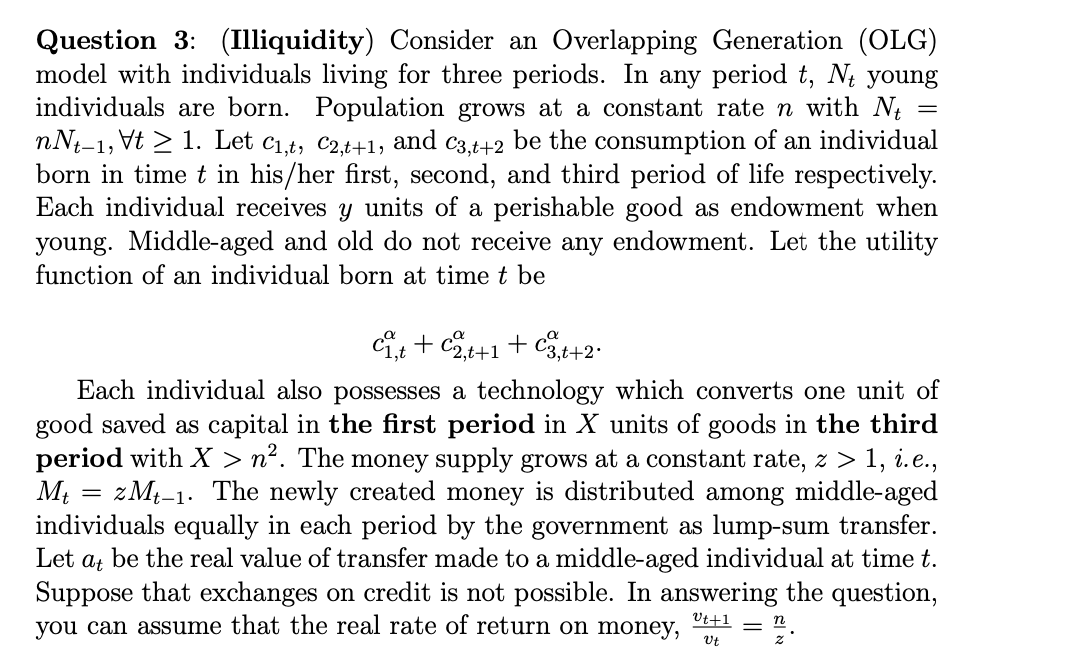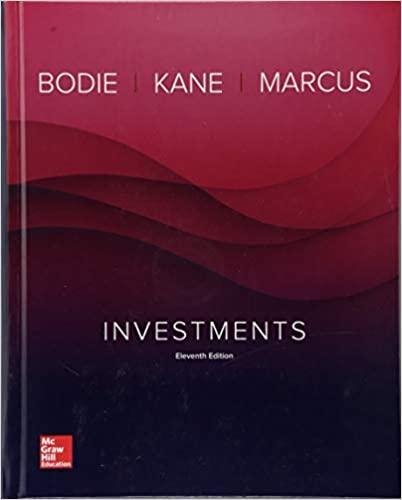Answered step by step
Verified Expert Solution
Question
1 Approved Answer
I. Would any individual use money to finance his/her consumption as old? Why or why not? What will be the value of at? Write down
I. Would any individual use money to finance his/her consumption as old? Why or why not? What will be the value of at? Write down an individuals life-time budget constraint. [ Marks 5]
II. Derive first order conditions characterizing the optimal choices of capital investment and money holding and interpret them. [Marks 10]
III. Write down the goods market clearing condition. Using the goods market clearing condition along with budget constraints and first order conditions, derive the optimal amount of capital investment. [Marks 10]

Step by Step Solution
There are 3 Steps involved in it
Step: 1

Get Instant Access to Expert-Tailored Solutions
See step-by-step solutions with expert insights and AI powered tools for academic success
Step: 2

Step: 3

Ace Your Homework with AI
Get the answers you need in no time with our AI-driven, step-by-step assistance
Get Started


